 Home
Home

Barcodes
Barcode Basics * Corrective Markings * Slogans
Barcode Basics
Starting around 1992 the US Postal Service began wide-spread use of high speed automating mail sorting based on destination zip codes using bar codes. Mass mailers were asked to format addresses uniformly (typed in capital letters, with appropriate standardized abbreviations) in order to receive a postage discount from the post office. Special optical character readers (OCR) machines would read the address and apply a barcode to the envelope. Such letters then headed for carrier sequence barcode readers which sorted the mail by zip code.
However it soon became necessary to devise a way of defacing improper bar codes, either mistakenly applied by the OCRs or when a letter was re-routed. Here are some methods the USPS devised to obliterate an incorrect bar code and/or re-apply a new one to a letter.
First, a primer on how to read a bar code. It is made up of a series of tall and short bars which either represent a number or tell an OCR to start or end reading the code.
Each number is represented by a series of 5 bars. Here, a short bar is represented by a comma.
Example: 14615 number by number <,,,II><,I,,I><,II,,><,,,II><,I,I,>
or all together looks like: ,,,II,I,,I,II,,,,,II,I,I,
All bar codes start and end with a tall bar, called a framing bar, which should be disregarded when interpreting a zip code. Before the end framing bar is a checksum set of 5 tall and short bars. The checksum is the smallest number that, when added to the total of the other digits, gives a result that is a multiple of 10. For 14615, the checksum number would be 3 (digit sum=17, +3 =20). This can also be disregarded when manually interpreting a zip code.
So a complete bar code for zip 14615 would appear as: I,,,II,I,,I,II,,,,,II,I,I,,,II,I
Don't forget that in some cases you'll see bar codes for zip+4 (9 total digits) as well as zip+4 plus the last 2 digits of the street number (11 total digits).
Corrective Markings
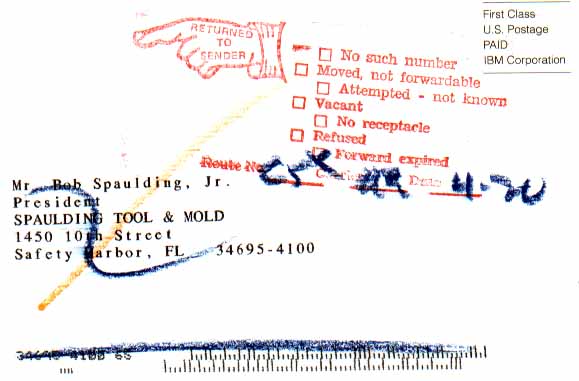
Crayon
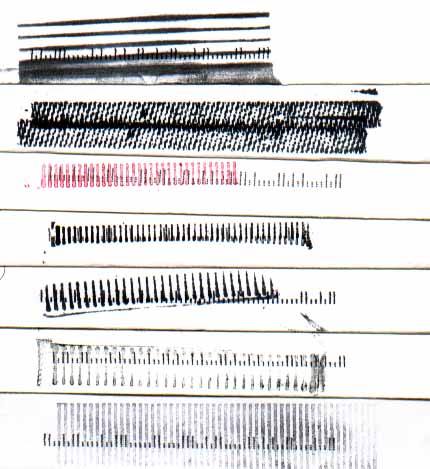
horizontal and vertical bars
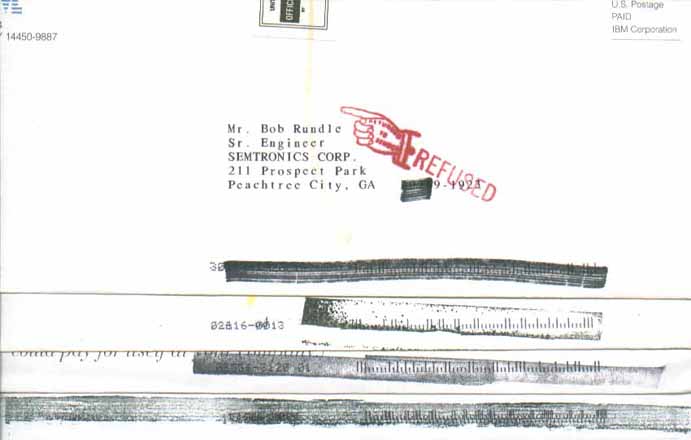
Wide-tipped marker (top) and solid bars
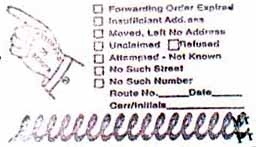
Squiggles (click to view the cover)
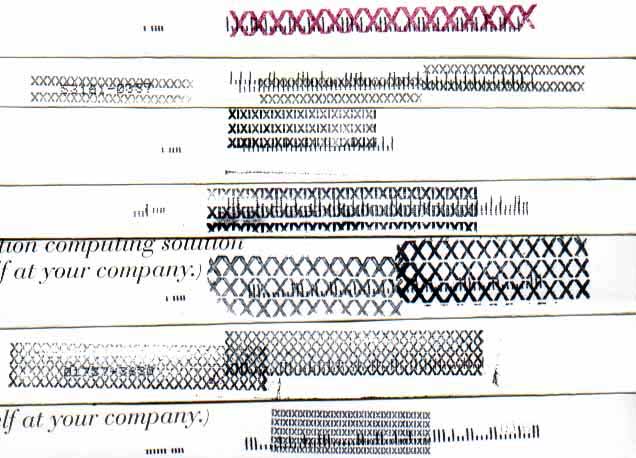
X's
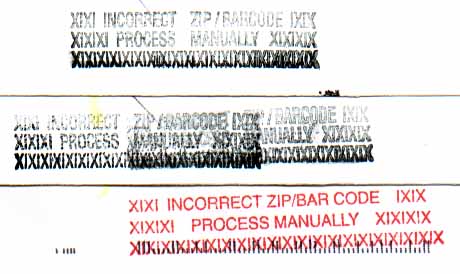
X's with words
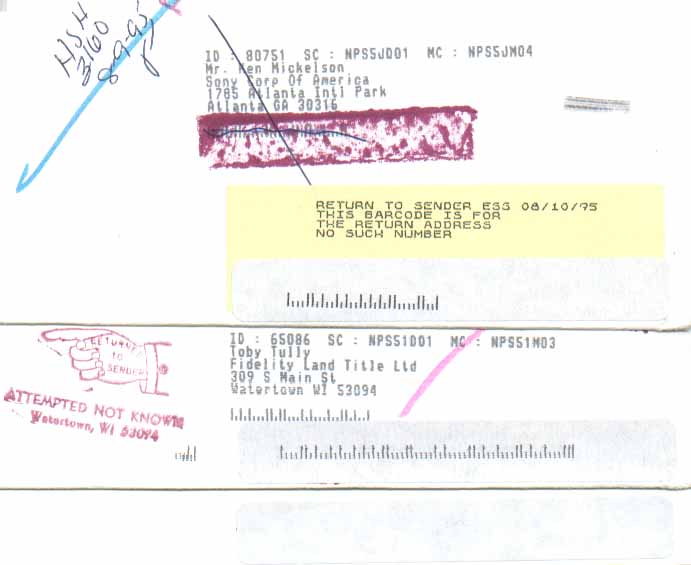
Stickers
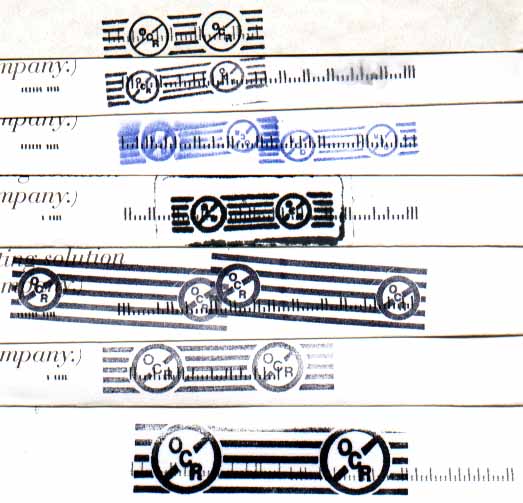
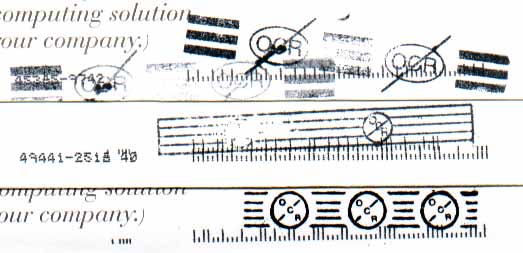
OCR corrections
Bar Code Slogans

